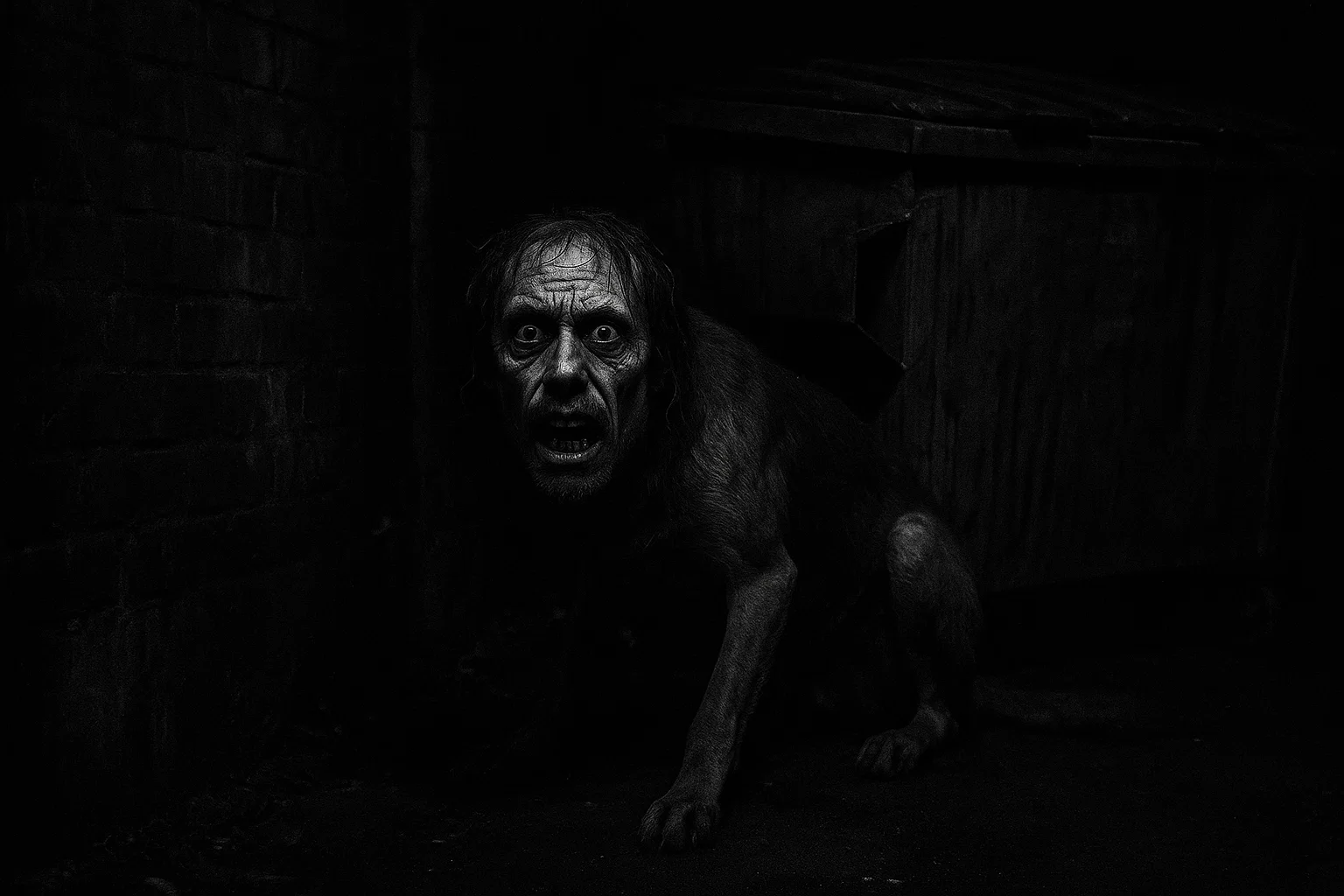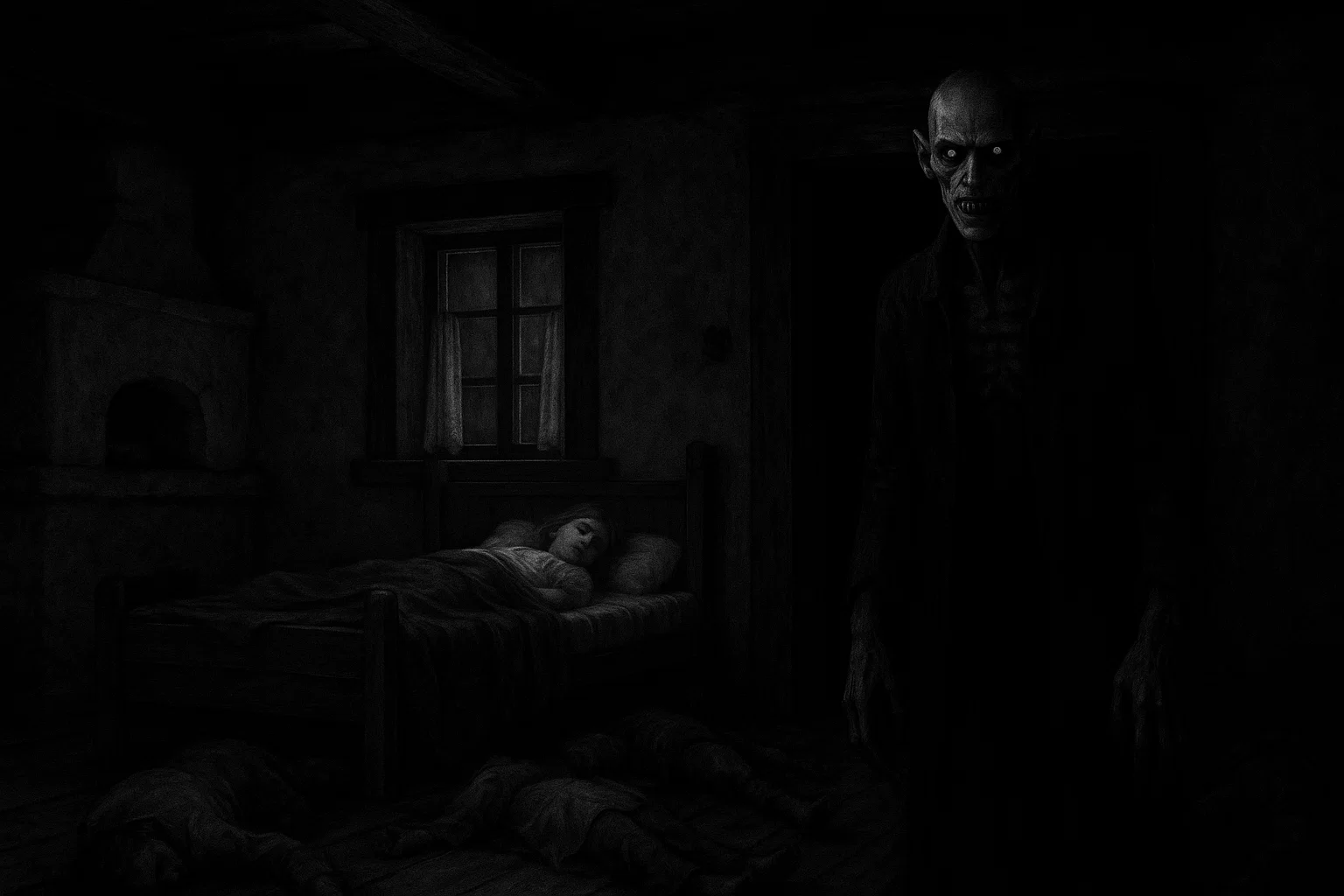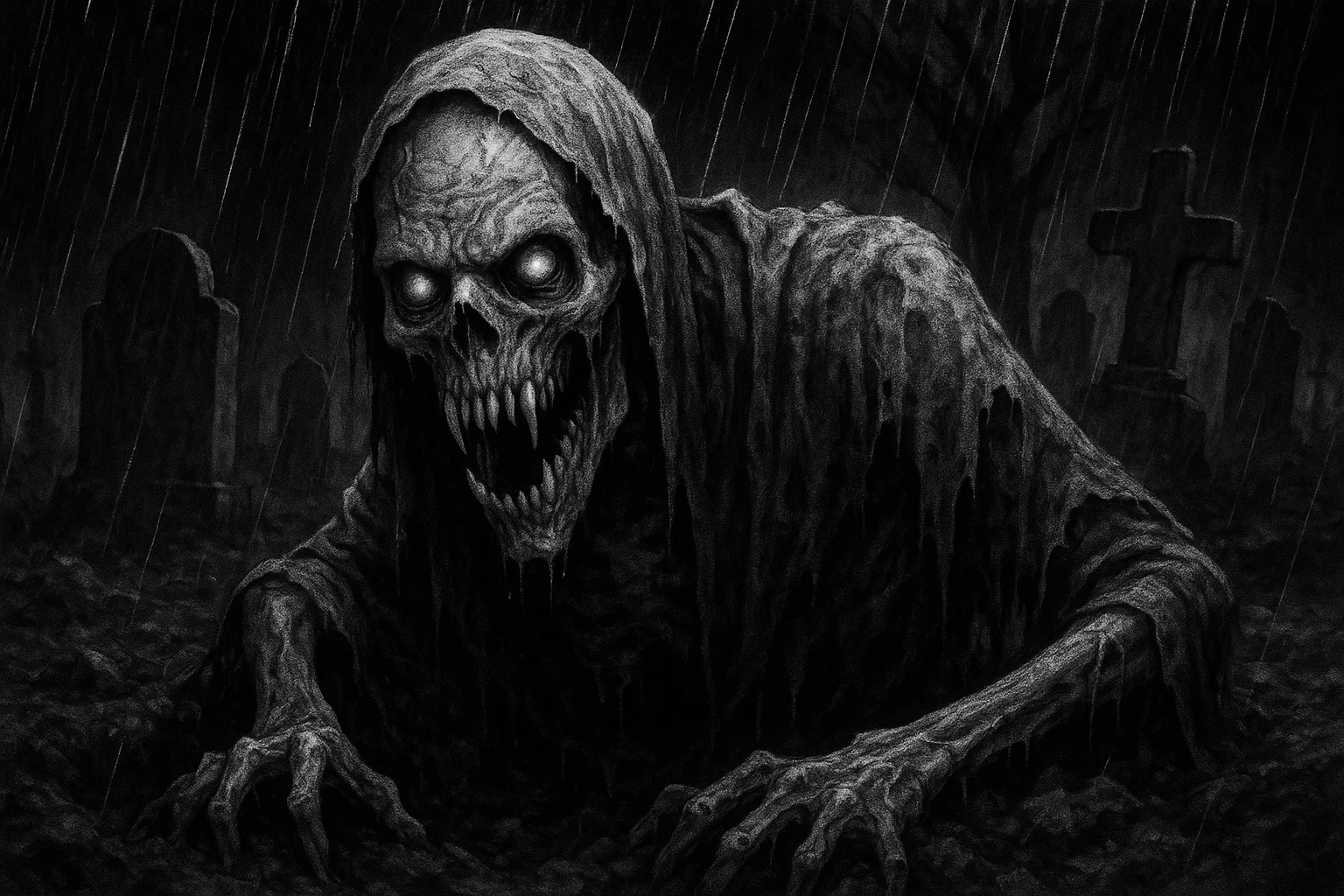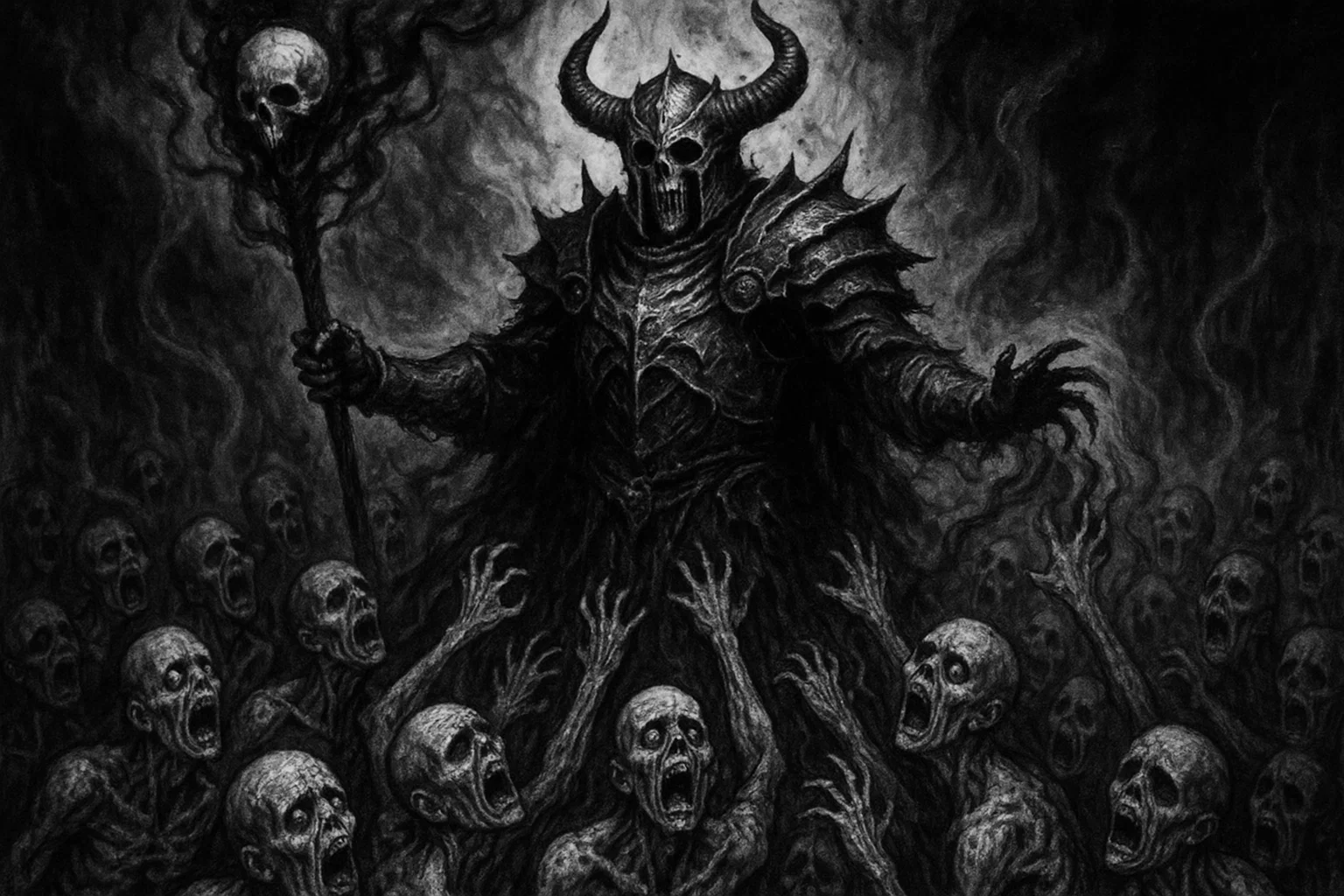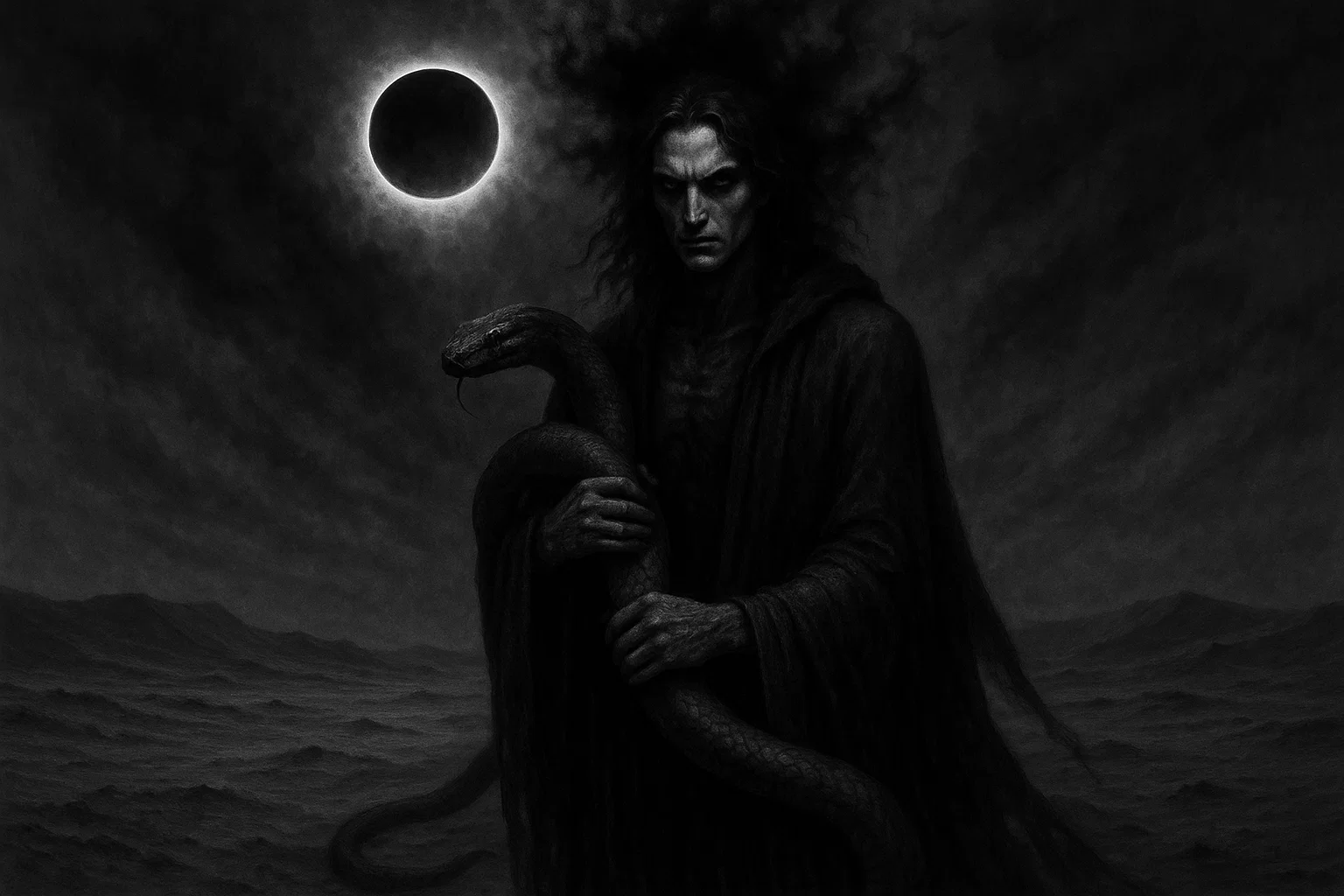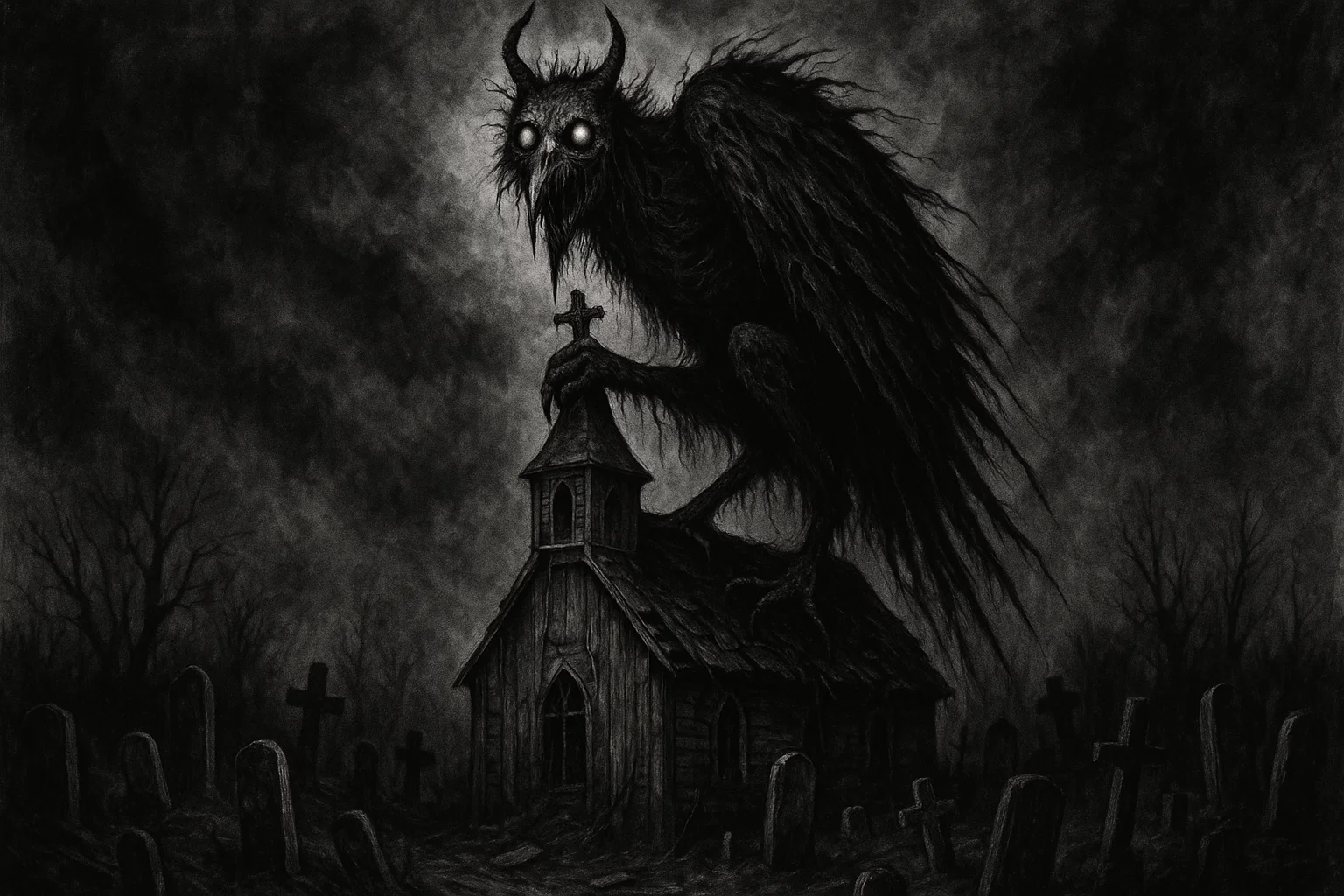In the dimly lit alleys of Japan, a chilling figure emerges from the shadows: the Jinmenken, a dog with a human face that haunts urban streets.
This eerie creature, steeped in Japanese folklore, whispers cryptic warnings to passersby, its voice echoing through the night. As a cornerstone of Japanese urban legends, the Jinmenken blends mystery and dread, captivating those who dare to explore its tale.
Uncover the origins, stories, and cultural significance of this spectral canine, a symbol of the uncanny in Japan’s bustling cities.
Table of Contents
What Is a Jinmenken?
The Jinmenken is a legendary creature from Japanese folklore, known for its dog-like body and startling human face. Often spotted in urban areas at night, it rummages through trash or races along highways with unnatural speed.
Unlike fearsome yōkai (supernatural beings), the Jinmenken is typically harmless, speaking in a weary human voice to plead for solitude. Its glowing red eyes and matted fur add to its ghostly aura, making it a haunting figure in Japanese urban myths.
Jinmenken History
The Jinmenken legend traces back to Japan’s Edo period (1603–1868), a time rife with supernatural tales.
In 1810, a Tokyo merchant displayed “human-faced puppies” at a misemono (carnival sideshow), claiming they were born to a local dog. Crowds flocked to see the oddities, but whispers of tragedy followed.
The merchant’s home burned down weeks later, killing his family in a blaze locals blamed on the Jinmenken’s curse. Such events fueled beliefs that the creature was a bad omen, tied to misfortune.
During the Meiji period (1868–1912), sightings grew darker. In 1875, a Kyoto farmer reported a Jinmenken near his fields, its face resembling his brother, who had died in a brutal cart accident.
The farmer’s crops withered soon after, and he took his own life, convinced the creature heralded doom. Similarly, in 1891, a Jinmenken sighting in Osaka preceded a deadly factory fire that claimed 12 lives. Witnesses swore the creature’s face mirrored a worker killed in the blaze, deepening its link to tragedy.
The late 1980s and early 1990s saw a surge in Jinmenken sightings, especially in Tokyo’s Shibuya District.
In 1989, a taxi driver crashed on a highway after spotting a human-faced dog running alongside his car. He survived but claimed the creature’s face resembled a man killed in a hit-and-run nearby.
Another chilling report from 1992 described a Jinmenken near a Yokohama construction site where a worker had fallen to his death. The creature’s eerie presence and whispered warnings sparked panic, with some locals linking it to restless spirits of accident victims.
Speculation abounds about the Jinmenken’s origins. Some believe they are tormented souls fused with dogs after violent deaths, like those in car crashes or industrial accidents.
Others suggest secret experiments in hidden laboratories created these hybrids, with rumors of failed Meiji-era medical trials.
Misidentified animals, such as Japanese macaques with human-like faces, also offer a rational explanation. Yet, the persistent connection to fires, suicides, and accidents keeps the Jinmenken’s dark legacy alive in Japanese mythology.
You May Also Like: The 1986 Kobe Middle School Murders | Horror Story
Jinmenken Meaning
The term Jinmenken breaks down into Japanese characters: 人 (jin, human), 面 (men, face), and 犬 (ken, dog), meaning “human-faced dog.”
Pronounced jin-men-ken, it’s a straightforward name for a bizarre creature. In Japanese culture, such hybrids reflect deep-rooted fears of the unnatural, often tied to yōkai—spirits or monsters embodying human anxieties.
The Jinmenken fits into Japan’s rich folklore tradition, where creatures like yōkai and obake (ghosts) symbolize societal concerns. Its human face suggests a loss of humanity, perhaps reflecting fears of industrialization during the Meiji period, when Japan rapidly modernized.
The creature’s urban sightings align with anxieties about crowded cities, where the line between natural and unnatural blurs. Its plea for solitude—“Leave me alone”—echoes Japanese values of privacy and respect, even for supernatural beings.
Some scholars link the Jinmenken to Shinto beliefs, where spirits (kami) can inhabit animals. A dog with a human face might represent a spirit possession, where a deceased person’s soul merges with a canine host.
Others see it as a metaphor for guilt or unresolved trauma, especially given its ties to tragic events like accidents or suicides. In modern times, the Jinmenken may symbolize fears of genetic tampering or unethical science, as rumors of laboratory experiments persist.
You May Also Like: Gozu Urban Legend: The Story That Allegedly Kills You
Stories
The Jinmenken’s tales are woven into Japanese urban legends. These stories vary in tone, from spooky to tragic, but all emphasize the Jinmenken’s nocturnal habits, human-like speech, and ominous presence.
Some portray it as a lonely spirit seeking peace, while others cast it as a warning of impending doom, especially tied to urban tragedies.
The Restaurant Encounter
In 1987, a Tokyo chef named Hiroshi Tanaka was closing his ramen shop in Shinjuku. While tossing out trash, he noticed a scruffy dog digging through a dumpster.
As he approached, the dog turned, revealing a weathered human face with deep-set eyes. “Leave me alone,” it rasped in Japanese (hottoite kure). Stunned, Hiroshi froze as the creature fled into an alley. Days later, a fire broke out in the shop, destroying it.
Locals whispered the Jinmenken had cursed Hiroshi for disturbing it, tying the creature to the tragedy.
The Highway Chase
In 1990, a truck driver, Kenji Sato, was driving along a quiet highway near Yokohama at midnight.
A dog appeared, matching his speed of 80 mph. Glancing over, Kenji saw a human face staring back, its eyes glowing red. “Do not look at me,” it said, its voice hollow.
Panicked, Kenji swerved, crashing into a ditch. He survived but learned a man had died on that road weeks earlier in a hit-and-run, his face eerily similar to the Jinmenken’s. The story spread, cementing the creature’s link to fatal accidents.
The Shibuya Sighting
In 1989, a group of teenagers in Shibuya District spotted a Jinmenken near a convenience store. It was rummaging through trash, its human face illuminated by streetlights.
One teen, Aiko Yamada, claimed it looked like her uncle, who had died in a construction accident nearby. The creature muttered, “Go away,” before vanishing. The next day, a minor earthquake shook Shibuya, damaging buildings.
Locals blamed the Jinmenken, calling it a harbinger of misfortune. This tale fueled media coverage, making the creature a household name.
You May Also Like: Inokashira Park Curse: The Mysterious Park That Breaks Couples
Jinmenken vs Other Japanese Monsters
The Jinmenken shares traits with other yōkai and mythical creatures in Japanese folklore:
| Name | Appearance | Behavior | Habitat | Notable Characteristics |
|---|---|---|---|---|
| Inugami | Invisible or dog-like spirit | Possesses people, causes illness or death | Western Japan, family homes | Created through cruel rituals, loyal but vengeful |
| Okuri-inu | Large wolf or dog | Follows travelers, attacks if they fall | Mountain paths | Protects or preys, tied to night journeys |
| Hainu | Winged dog | Loyal or menacing, swift and strong | Forests, mountains | Linked to Chikugo legend, can be tamed |
| Koma inu | Lion-dog statues | Guards shrines and temples | Sacred sites | Yin-yang pairs, open/closed mouth symbolism |
| Nekomata | Two-tailed cat | Shape-shifts, causes fires, controls corpses | Urban, rural areas | Malevolent, tied to death and destruction |
| Kitsune | Multi-tailed fox | Tricks or aids humans, shape-shifter | Forests, shrines | Divine messengers, linked to Inari deity |
| Tanuki | Raccoon dog with large testicles | Prankster, shape-shifts, jolly | Forests, villages | Known for humor and transformation |
| Kappa | Turtle-like humanoid, dish on head | Drags people into water, can be friendly | Rivers, lakes | Strength tied to head dish, loves cucumbers |
| Tengu | Bird-like humanoid, red face | Mountain protectors, tricksters | Mountains | Skilled warriors, tied to Shugendō |
| Nue | Chimera: monkey head, raccoon body | Brings illness, misfortune | Urban areas, palaces | Caused emperor’s nightmares, slain by hero |
The Jinmenken’s urban setting and human-like speech distinguish it from these creatures. While Inugami and Okuri-inu share canine traits, they lack the Jinmenken’s human face and modern context. Its ties to city life and tragedies set it apart from nature-bound yōkai like Kitsune or Kappa.
Is the Jinmenken Real?
No solid evidence proves the Jinmenken exists. Sightings, like those in Shibuya or Yokohama, are often explained as misidentified Japanese macaques or dogs with unusual markings.
Birth defects in animals, like facial deformities, could also account for early Edo period reports. The 1810 misemono likely showcased such anomalies to profit from public curiosity.
Yet, the Jinmenken endures in Japanese culture, appearing in anime like Yo-kai Watch and GeGeGe no Kitarō. Its stories reflect fears of urban chaos, scientific overreach, or restless spirits.
As of 2025, no new sightings have been widely reported, but the legend persists, a haunting reminder of humanity’s fascination with the unknown.

